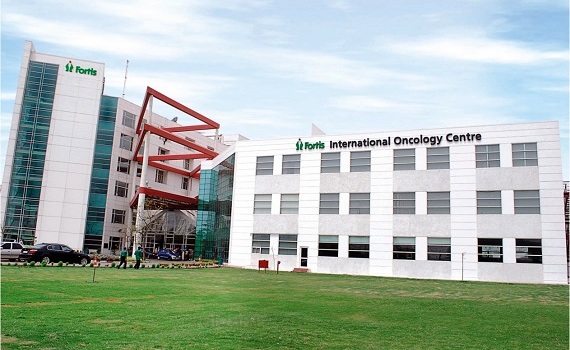Oophorectomy Treatment in India
treatment
starting from
Overview
Oophorectomy, also known as ovarian removal surgery, is a surgical procedure performed to remove one or both ovaries from a woman's reproductive system. This surgical intervention may be recommended for various medical reasons, such as the presence of ovarian cysts, tumors, endometriosis, or a high risk of ovarian cancer. Oophorectomy can be performed using different techniques, including traditional open surgery or minimally invasive laparoscopic approaches. This article provides a comprehensive guide to oophorectomy, including its introduction, symptoms, causes, treatment, benefits, cost in India, and its significance in addressing ovarian-related health conditions.
Introduction to Oophorectomy:
Oophorectomy is a surgical procedure designed to remove one or both ovaries from a woman's reproductive system. The ovaries are essential reproductive organs responsible for producing eggs and hormones, such as estrogen and progesterone. Oophorectomy may be performed for various medical reasons, including the following:
- Ovarian Cysts: Large or persistent ovarian cysts that cause pain or complications may necessitate oophorectomy.
- Ovarian Tumors: The presence of ovarian tumors, whether benign or malignant, may require removal of the affected ovary.
- Endometriosis: In severe cases of endometriosis, where tissue growth occurs outside the uterus, oophorectomy may be considered to manage symptoms.
- Ovarian Cancer: Women at high risk of ovarian cancer, especially those with a family history of the disease or specific genetic mutations, may opt for prophylactic oophorectomy to reduce their risk.
Oophorectomy can be performed as a unilateral procedure, where only one ovary is removed, or as a bilateral procedure, involving the removal of both ovaries.
Symptoms Leading to Oophorectomy:
The decision to undergo oophorectomy is typically based on the underlying medical condition or risk factors associated with the ovaries. Some of the symptoms or conditions that may lead to the recommendation of oophorectomy include:
- Ovarian Cysts: Large or persistent ovarian cysts may cause pelvic pain, bloating, and pressure, warranting surgical intervention.
- Ovarian Tumors: Ovarian tumors may present with pelvic pain, irregular menstrual cycles, and changes in bowel or bladder habits.
- Endometriosis: Severe endometriosis can lead to chronic pelvic pain, painful intercourse, and fertility issues, prompting the consideration of oophorectomy.
- Ovarian Cancer: Women with a high risk of ovarian cancer, such as those with BRCA gene mutations, may choose to undergo preventive oophorectomy to reduce their cancer risk.
Causes of Oophorectomy:
Oophorectomy is primarily performed to address various medical conditions affecting the ovaries. Some of the common causes that may lead to oophorectomy include:
- Ovarian Cysts: Ovarian cysts are fluid-filled sacs that can develop on or within the ovaries. Large or persistent cysts that cause symptoms or complications may require surgical removal.
- Ovarian Tumors: Ovarian tumors can be benign (non-cancerous) or malignant (cancerous). Depending on the tumor type and size, oophorectomy may be necessary for diagnostic or therapeutic purposes.
- Endometriosis: Endometriosis is a condition in which the tissue lining the uterus (endometrium) grows outside the uterus, often affecting the ovaries. Severe endometriosis may necessitate oophorectomy to manage symptoms.
- Ovarian Cancer: Oophorectomy is commonly performed as part of ovarian cancer treatment to remove cancerous tissue and prevent the spread of the disease.
Treatment: Oophorectomy:
Oophorectomy is typically performed as a surgical procedure, and the approach may vary based on the patient's condition and medical history. The main types of oophorectomy are:
- Unilateral Oophorectomy: In this procedure, only one ovary is removed, leaving the other ovary intact.
- Bilateral Oophorectomy: Both ovaries are removed in this procedure. Bilateral oophorectomy may be performed as a preventive measure for women at high risk of ovarian cancer.
Oophorectomy can be carried out through different surgical approaches, including traditional open surgery or minimally invasive laparoscopic surgery. Laparoscopic oophorectomy involves making several small incisions, through which a laparoscope (a thin, flexible tube with a camera) and surgical instruments are inserted to perform the procedure. This minimally invasive technique often results in less scarring, reduced pain, and faster recovery compared to open surgery.
Benefits of Oophorectomy:
Oophorectomy offers several benefits for women with certain medical conditions or risk factors:
- Treatment of Medical Conditions: Oophorectomy can effectively address various conditions affecting the ovaries, such as ovarian cysts, tumors, and endometriosis.
- Cancer Risk Reduction: In women at high risk of ovarian cancer, prophylactic oophorectomy can significantly reduce the risk of developing the disease.
- Symptom Relief: For women experiencing symptoms related to ovarian conditions, oophorectomy can provide relief from pain, discomfort, and other associated symptoms.
- Cancer Treatment: In cases of ovarian cancer, oophorectomy is a crucial component of the cancer treatment plan to remove cancerous tissue.
Cost of Oophorectomy in India:
The cost of oophorectomy in India can vary depending on several factors, including the type of oophorectomy (unilateral or bilateral), the surgical approach (open or laparoscopic), the hospital or medical facility, and the patient's overall health. On average, the cost of oophorectomy in India ranges from ?70,000 to ?3,00,000 or more.
Conclusion
Oophorectomy is a surgical procedure performed to remove one or both ovaries from a woman's reproductive system. It is commonly employed to address various medical conditions, including ovarian cysts, tumors, endometriosis, and high-risk factors for ovarian cancer. Oophorectomy can be performed through traditional open surgery or minimally invasive laparoscopic techniques, offering several benefits, such as the treatment of medical conditions, cancer risk reduction, symptom relief, and cancer treatment. Patients considering oophorectomy should undergo a comprehensive evaluation, discuss the potential risks and benefits with their healthcare team, and choose a reputable medical facility with experienced surgeons to ensure the best possible outcome. India's advanced medical facilities, skilled healthcare professionals, and cost-effective healthcare services make it a favorable destination for patients seeking high-quality oophorectomy procedures.
How It Works
Need help in organizing medical travel to India?





